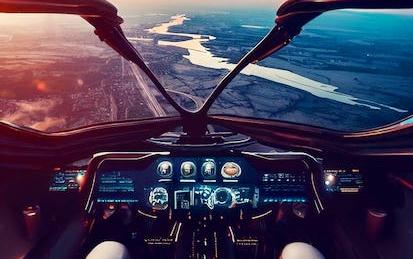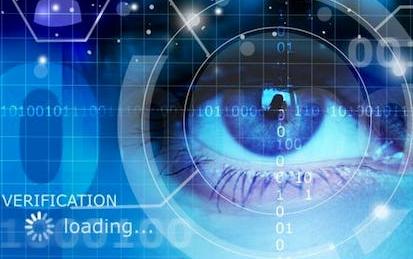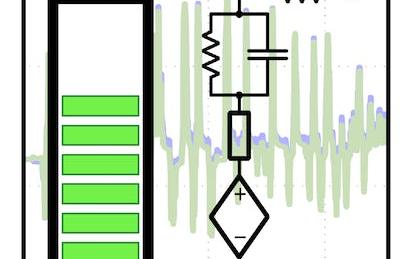

دوراتنا

Robot Development
This course offers in-depth learning of developmental cognitive robotics, taking direct inspiration from child psychologyused to develop sensorimotor and cognitive skills in robots.
-
Course by

-
 30
30
-
 الإنجليزية
الإنجليزية

Robotics Foundations I - Robot Modeling
This course explores the robotics foundations for modelling of robot manipulators.
-
Course by

-
 30
30
-
 الإنجليزية
الإنجليزية

Robotics Foundation II - Robot Control
This course explores the robotics foundations for planning and control of robot manipulators and mobile robots
-
Course by

-
 30
30
-
 الإنجليزية
الإنجليزية

Modern Robotics: Mechanics, Planning, and Control
This Specialization provides a rigorous treatment of spatial motion and the dynamics of rigid bodies, employing representations from modern screw theory and the product of exponentials formula. Students with a freshman-level engineering background will quickly learn to apply these tools to analysis, planning, and control of robot motion. Students' understanding of the mathematics of robotics will be solidified by writing robotics software.
-
Course by

-
 Self Paced
Self Paced
-
 الإنجليزية
الإنجليزية

Self-Driving Cars with Duckietown
Self-Driving Cars with Duckietown is the first robotics and AI MOOC with scale-model self-driving cars. Learn state-of-the-art autonomy hands-on: build your own real robot (Duckiebot) and get it to drive autonomously in your scaled city (Duckietown).
-
Course by

-
 الإنجليزية
الإنجليزية

Robotics
The Introduction to Robotics Specialization introduces you to the concepts of robot flight and movement, how robots perceive their environment, and how they adjust their movements to avoid obstacles, navigate difficult t…
-
Course by

-
 Self Paced
Self Paced
-
 الإنجليزية
الإنجليزية

Autonomous Vehicle Engineering
This specialization is intended for students seeking to explore the Autonomous Vehicle sector, which is undergoing profound transformation in today’s world.
-
Course by

-
 الإنجليزية
الإنجليزية

C Programming: Language Foundations - 2
In this course you will learn to use logical statements and arrays in C. Logical statements are used for decision-making with follow-up instructions, based on conditions you define. Arrays are used to store, keep track of, and organize larger amounts of data. You will furthermore implement some fundamental algorithms to search and sort data. Why learn C? Not only is it one of the most stable and popular programming languages in the world, it's also used to power almost all electronic devices.
-
Course by

-
 Self Paced
Self Paced
-
 14 ساعات
14 ساعات
-
 الإنجليزية
الإنجليزية

Modern Robotics, Course 3: Robot Dynamics
Do you want to know how robots work? Are you interested in robotics as a career? Are you willing to invest the effort to learn fundamental mathematical modeling techniques that are used in all subfields of robotics? If so, then the "Modern Robotics: Mechanics, Planning, and Control" specialization may be for you. This specialization, consisting of six short courses, is serious preparation for serious students who hope to work in the field of robotics or to undertake advanced study.
-
Course by

-
 Self Paced
Self Paced
-
 22 ساعات
22 ساعات
-
 الإنجليزية
الإنجليزية

Foundation of Structural Dynamics
A course with variable geometry where everyone, we hope, will find personal benefits. The parts can be studied sequentially or independently; and inside each part, elementary learning items can be picked up.
-
Course by

-
 Self Paced
Self Paced
-
 7 ساعات
7 ساعات
-
 الإنجليزية
الإنجليزية

Geometric Algorithms
Geometric algorithms are a category of computational methods used to solve problems related to geometric shapes and their properties. These algorithms deal with objects like points, lines, polygons, and other geometric figures. In many areas of computer science such as robotics, computer graphics, virtual reality, and geographic information systems, it is necessary to store, analyze, and create or manipulate spatial data.
-
Course by

-
 Self Paced
Self Paced
-
 18 ساعات
18 ساعات
-
 الإنجليزية
الإنجليزية

Linux Basics: The Command Line Interface - 6
This course will introduce you to Linux, a powerful operating system used by most professional developers! Why add Linux to your C programming skills? Most people use Linux without knowing it! Whether you use a smartphone, search the web, or use an ATM, each time Linux is involved somewhere in the background. It is the most used operating system for embedded devices and high-performance servers.
-
Course by

-
 Self Paced
Self Paced
-
 8 ساعات
8 ساعات
-
 الإنجليزية
الإنجليزية

3D Reconstruction - Single Viewpoint
This course focuses on the recovery of the 3D structure of a scene from its 2D images. In particular, we are interested in the 3D reconstruction of a rigid scene from images taken by a stationary camera (same viewpoint). This problem is interesting as we want the multiple images of the scene to capture complementary information despite the fact that the scene is rigid and the camera is fixed.
-
Course by

-
 11 ساعات
11 ساعات
-
 الإنجليزية
الإنجليزية

C Programming: Using Linux Tools and Libraries - 7
Learn how to use professional tools and libraries to write and build C programs within the Linux operating system. This seventh and final course in the C Programming with Linux Specialization will allow you to develop and use your C code within the Linux operating system. Using libraries in C is a fundamental concept when it comes to sharing code with others.
-
Course by

-
 Self Paced
Self Paced
-
 9 ساعات
9 ساعات
-
 الإنجليزية
الإنجليزية

Modelling and simulation of mechanical systems
The course provides the principles of modelling and simulation of modern mechatronic systems, which are mechanical systems integrated with several types of sensors and actuators. The aim of the course is to show different methodologies to improve the potential of mechanical systems by transforming them into mechatronic systems based on virtual models. In particular, the lessons will be focused on case studies in three engineering fields: robotics, controlled electro-hydraulic actuators and smart devices.
-
Course by

-
 Self Paced
Self Paced
-
 14 ساعات
14 ساعات
-
 الإنجليزية
الإنجليزية

Introduction to Computer Vision and Image Processing
Computer Vision is one of the most exciting fields in Machine Learning and AI. It has applications in many industries, such as self-driving cars, robotics, augmented reality, and much more. In this beginner-friendly course, you will understand computer vision and learn about its various applications across many industries. As part of this course, you will utilize Python, Pillow, and OpenCV for basic image processing and perform image classification and object detection. This is a hands-on course and involves several labs and exercises.
-
Course by

-
 Self Paced
Self Paced
-
 22 ساعات
22 ساعات
-
 الإنجليزية
الإنجليزية

State Estimation and Localization for Self-Driving Cars
Welcome to State Estimation and Localization for Self-Driving Cars, the second course in University of Toronto’s Self-Driving Cars Specialization. We recommend you take the first course in the Specialization prior to taking this course. This course will introduce you to the different sensors and how we can use them for state estimation and localization in a self-driving car.
-
Course by

-
 Self Paced
Self Paced
-
 27 ساعات
27 ساعات
-
 الإنجليزية
الإنجليزية

Modern Robotics, Course 1: Foundations of Robot Motion
Do you want to know how robots work? Are you interested in robotics as a career? Are you willing to invest the effort to learn fundamental mathematical modeling techniques that are used in all subfields of robotics? If so, then the "Modern Robotics: Mechanics, Planning, and Control" specialization may be for you. This specialization, consisting of six short courses, is serious preparation for serious students who hope to work in the field of robotics or to undertake advanced study.
-
Course by

-
 Self Paced
Self Paced
-
 24 ساعات
24 ساعات
-
 الإنجليزية
الإنجليزية

Introduction to Self-Driving Cars
Welcome to Introduction to Self-Driving Cars, the first course in University of Toronto’s Self-Driving Cars Specialization. This course will introduce you to the terminology, design considerations and safety assessment of self-driving cars.
-
Course by

-
 Self Paced
Self Paced
-
 35 ساعات
35 ساعات
-
 الإنجليزية
الإنجليزية

Robotics: Aerial Robotics
How can we create agile micro aerial vehicles that are able to operate autonomously in cluttered indoor and outdoor environments? You will gain an introduction to the mechanics of flight and the design of quadrotor flying robots and will be able to develop dynamic models, derive controllers, and synthesize planners for operating in three dimensional environments. You will be exposed to the challenges of using noisy sensors for localization and maneuvering in complex, three-dimensional environments.
-
Course by

-
 Self Paced
Self Paced
-
 18 ساعات
18 ساعات
-
 الإنجليزية
الإنجليزية



